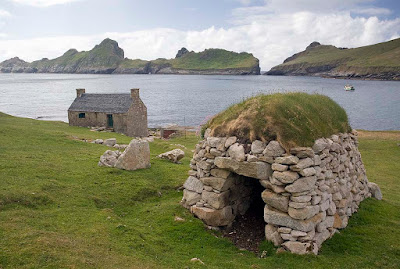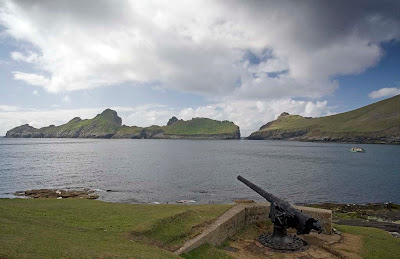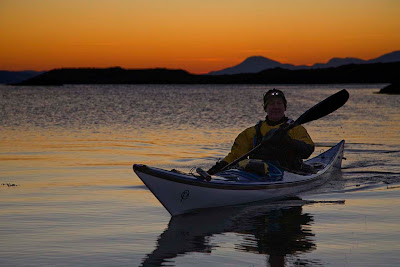
A grassy "street" leads from the store up to the houses that form the village on Hirta. It passes by the first of many cleitean (cleits) that you will discover on an exploration of the village. Indeed they are one of the most characteristic features of the topography of Hirta as you enter Village Bay by boat. These simple store structures are unique to St Kilda.

This is cleit number 1 on the map included with the really excellent booklet Buildings of St Kilda produced in 1988 by the Royal Commission on the Ancient and Historical Monuments of Scotland. On the side away from the sea and the prevailing SW wind, there is a low doorway. The roof is of turf over stone slabs and the walls are of loose drystone construction which lets the wind blow through for ventilation and drying. Some cleitean near the village had wooden doors to exclude animals while other had simple stone slabs . Most were built on a slope so that the floor would drain downhill.

They were used to store dried birds and fish, preserved eggs, barley, potatoes, cut peats and turfs and ropes. There are some 1,260 cleitean on Hirta and over 170 on the other islands and Stacs in St Kilda. Martin Martin mentioned them in the first written account of St Kilda in 1697. On the side away from the prevailing winds this cleit had a wonderful cap of thrift (or sea pink) flowers.
Many cleitean are of great antiquity but interestingly we know that this one was built relatively late in St Kilda's populated history. It was not yet built in a photograph taken in 1886.
03/06/2008 am















